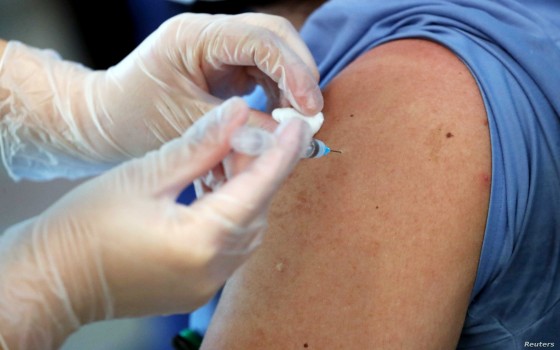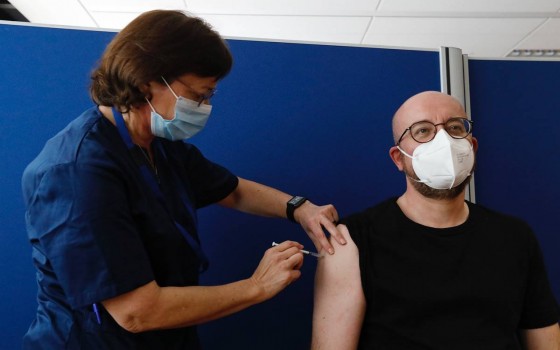
من السودان إلى اليمن .. الكوليرا تتوسع مدفوعة بالحروب والفقر.. منذ مطلع العام الحالي 390 الف اصابة

- Europe and Arabs
- السبت , 16 أغسطس 2025 8:12 ص GMT
جنيف : اوروبا والعرب
أفادت منظمة الصحة العالمية بأن الوضع العالمي لمرض الكوليرا مستمر في التدهور، مدفوعا بالصراعات والفقر. هذا العام، تم الإبلاغ عن أكثر من 390 ألف إصابة بالكوليرا وأكثر من 4,300 وفاة في 31 بلدا من بينها السودان واليمن.
وقدمت كاثرين ألبيرتي المسؤولة التقنية في منظمة الصحة العالمية لشؤون الكوليرا تحديثا حول الوضع العالمي للكوليرا، مشيرة إلى أن هذه الأرقام تعتبر تقديرات أقل من الواقع، "لكنها تعكس فشلا جماعيا: فالكوليرا مرض يمكن الوقاية منه وعلاجه بسهولة، ومع ذلك لا يزال يحصد الأرواح". بحبماجاء في نشرة الاخبار اليومية للامم المتحدة التي تلقينا نسخة منها صباح اليوم السبت
وأعربت خلال حديثها للصحفيين في مقر الأمم المتحدة في جنيف الجمعة عن قلقها بشكل خاص بشأن الكوليرا في السودان، وتشاد، وجمهورية الكونغو الديمقراطية، وجنوب السودان، واليمن. ففي كل هذه البلدان، تغذي الصراعات تفشي الكوليرا.
الوضع في السودان
بعد عام واحد من بدء تفشي المرض في السودان، وصلت الكوليرا إلى كل ولاية. هذا العام وحده، تم الإبلاغ عما يقرب من 50 ألف إصابة وأكثر من ألف وفاة، مع معدل وفيات مرتفع يبلغ 2.2%، وهو ما يتجاوز عتبة 1% التي تشير إلى فعالية العلاج.
وبرغم استقرار الحالات أو انخفاضها في بعض المناطق، بما فيها الخرطوم، إلا أنها آخذة في الارتفاع في إقليم دارفور، وتؤثر على تشاد المجاورة.
في محلية طويلة بشمال دارفور، تضاعف عدد النازحين بمعدل أربع مرات من 200 ألف إلى 800 ألف، مما يضع ضغطا هائلا على أنظمة المياه والصرف الصحي. ويحصل الأشخاص على ما لا يزيد عن 3 لترات من الماء يوميا في المتوسط - للشرب، والطهي، والغسيل، والتنظيف.
وفي تشاد المجاورة، حيث تم الإبلاغ عن الحالة الأولى قبل ما يزيد قليلا عن شهر واحد، تم تسجيل ما يزيد قليلا عن 500 حالة و30 وفاة في كل من المخيمات والمجتمعات المضيفة في محافظة ودّاي الحدودية.
لقاحات الكوليرا
منذ كانون الأول/ديسمبر، بلغ إنتاج لقاح الكوليرا الفموي مستويات قياسية - 6 ملايين جرعة شهريا، وهو أعلى معدل منذ عام 2013 - بفضل التركيبات الجديدة. لكن مستويات الطلب القياسية تجاوزت معدل الإنتاج.
منذ كانون الثاني/يناير، تلقت المجموعة التنسيقية الدولية لتوفير اللقاحات 38 طلبا من 12 بلدا - أي ثلاثة أضعاف العدد مقارنة بالفترة نفسها من العام الماضي.
وقد تم بالفعل تخصيص أكثر من 40 مليون جرعة هذا العام، مقارنة بـ 35 مليون جرعة تم تخصيصها في عام 2024 بأكمله. أكثر من 85% من الجرعات التي تمت الموافقة عليها هذا العام هي للبلدان التي تواجه أزمات إنسانية، حيث تذهب الحصة الأكبر إلى السودان.
السودان ليس الوحيد
وأشارت منظمة الصحة العالمية إلى أن السودان ليس البلد الوحيد الذي يثير القلق. في جمهورية الكونغو الديمقراطية، تم الإبلاغ عن أكثر من 44,521 حالة و1,238 وفاة هذا العام، معظمها في المناطق الشرقية المتأثرة بالصراع.
في جنوب السودان، تم الإبلاغ عما يقرب من 70,310 حالة وأكثر من 1,158 وفاة.
في اليمن، أكثر من 60,794 حالة و164 وفاة.
وذكرت المنظمة أن هذه الأرقام تشترك في أمرين: الأول، أنها مرتفعة جدا، وقد تضرر عدد كبير جدا من الناس، والثاني، أنها مدفوعة بالصراع.
فالصراع يجبر الناس على الفرار، غالبا إلى مخيمات مكتظة حيث تضعف فيها مرافق المياه والصرف الصحي والنظافة. وتتعرقل الاستجابة الإجمالية بسبب الموارد البشرية المستنفدة، والفجوات في البيانات، والنقص الخطير في التمويل.
وحثت منظمة الصحة العالمية الحكومات والمجتمع الدولي على:
تعبئة التمويل العاجل.
دعم النشر السريع للقاحات والإمدادات، وتأمين وصول آمن لعمال الإغاثة.
الاستثمار في الوقاية على المدى الطويل من خلال توفير المياه والصرف الصحي، وأنظمة مراقبة أقوى.












لا يوجد تعليقات